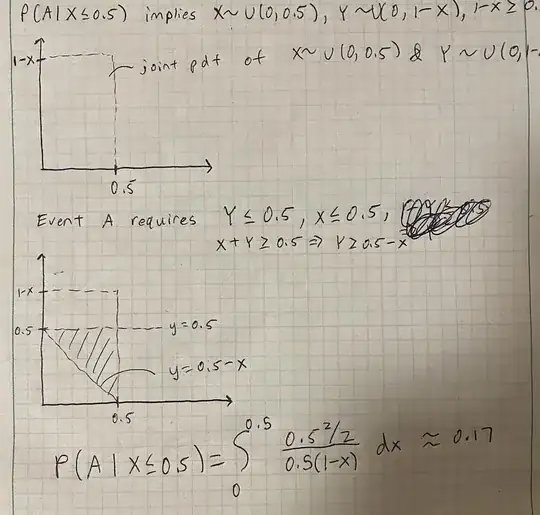This is a variant of a popular problem. In this variant, we sample the first point at which we cut a stick of length 1 uniformly from $U(0,1)$. The second cutting point is defined to be on the longer of the 2 segments after the first cut. We want to find the probability that the 3 segments form a valid triangle.
Let $X$ denote the first cut. Let $A$ denote the event that we form a valid triangle. Then $$ P(A) = P(A|X \leq 0.5) p(X \leq 0.5) + P(A|X > 0.5) p(X > 0.5) \\ = 2P(A|X \leq 0.5) p(X \leq 0.5) \\ = P(A|X \leq 0.5) $$
So I need to determine this conditional probability. When $X \leq 0.5$, we know the second cut $y$ can be sampled from $U(0, 1-x)$. So we consider the rectangular region bounded by $0 \leq x \leq 0.5$ and $0 \leq y \leq 1-x$ and note that $1 - x \geq 0.5$. This region defines the joint pdf of $X \sim U(0, 0.5)$ and $Y \sim U(0, 1-X)$.
The constraints that allow us to form a valid triangle within this rectangular region are $Y \leq 0.5$, $X + Y \geq 0.5$. These constraints create the shaded triangle in the picture below.
So I believe the answer should just integrate the area of the triangle divided by the area of the rectangular from $x = 0$ to $x = 0.5$. This gives approximately 0.17, which is not correct.
Here's a picture showing my work.
